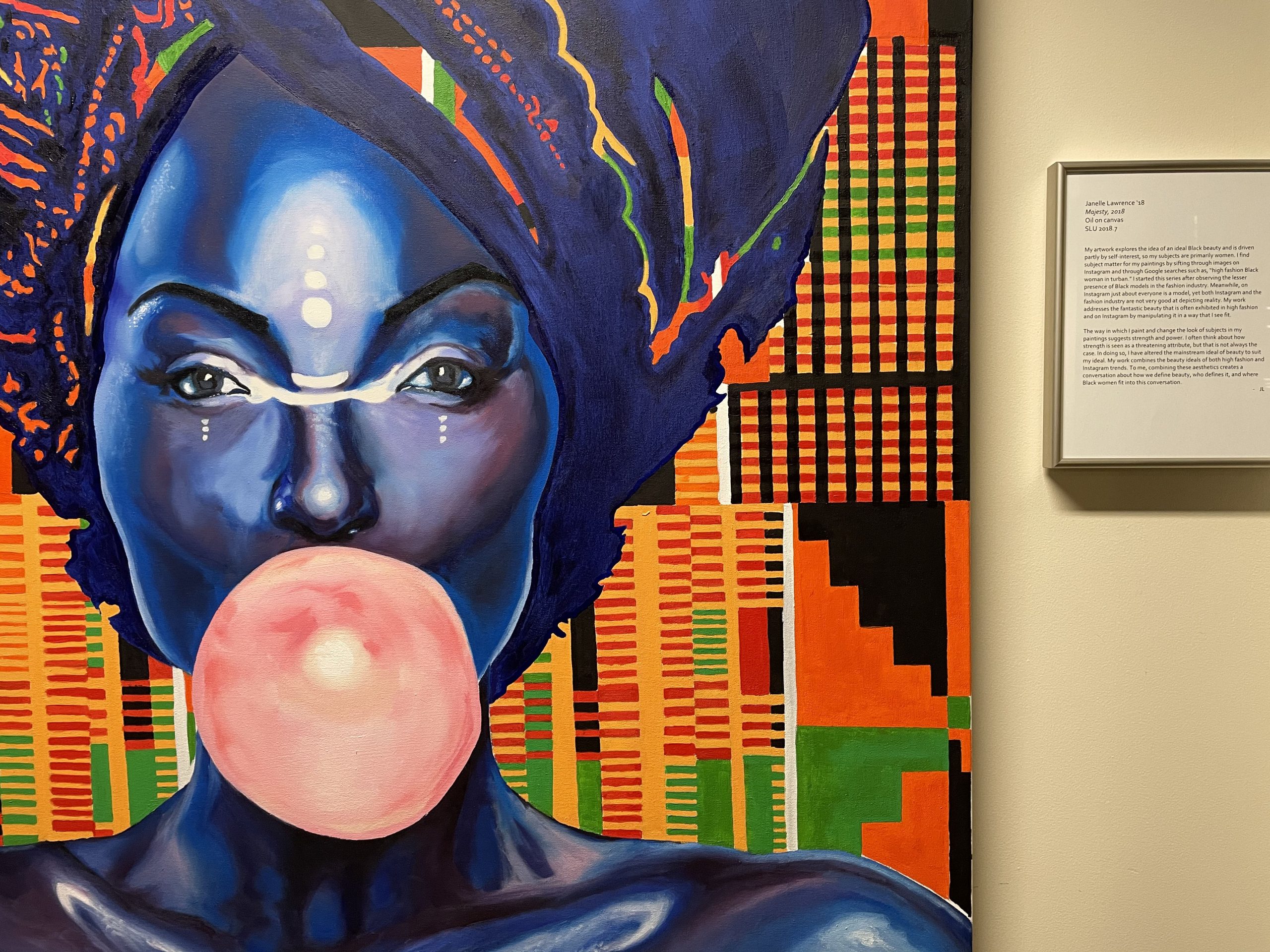Acceptance and Representation: Student Center Exhibit Highlights Black Artist
Last year, paintings and photographs from artists of color were placed on the first floor of the Student Center. Continuing this tradition, the new exhibit “All are Welcome Here, Strength and Beauty in Black and Brown” showcases photographs, paintings and drawings from students and recent alumnae that feature people of color at St. Lawrence and beyond. The exhibit focuses on things “that highlight the beauty, joy, strength and love within BIPOC communities,” according to St. Lawrence’s Diversity and Inclusion website.
“All are Welcome Here, Strength and Beauty in Black and Brown” is displayed in the Sullivan Student Center, most notably in the Reverend Kathleen Buckley Memorial Room. Reverend Buckley was passionate about underrepresented students on campus, and this exhibit draws on her legacy. “The exhibition title draws from the words of the late Rev. Kathleen Buckley, University Chaplain from 2001 to 2020,” says Catherine Tedford, Director of the Richard F. Brush Art Gallery. This project has personal meaning for Tedford as well. “I’m delighted to work on campus displays that address underrepresentation,” she says. “I’ve made a point of doing so in the rotating exhibitions that we present every year in the gallery, but the campus as a whole clearly needs more work on display by BIPOC artists.”
Tedford has been working on this project for years with the help of Associate Dean for Diversity and Inclusion Kimberly Flint-Hamilton. “Art has always been an important way for us to communicate meaning,” Flint-Hamilton says. “We express our wishes, desires, feelings, hopes and dreams through art. We communicate messages about ourselves – who we imagine ourselves to be, what we believe our ‘best selves’ could and should be. And we also communicate messages about others. Too often, the messages communicated about underrepresented identity groups has been negative – about not belonging, about not fitting in. But art can be used to show that we all are important members of our community. We all belong.”
Tedford, Flint-Hamilton and The Richard F. Brush Art Gallery began buying pieces from students several years ago. Artists include Nadirah Croft ’21, Kalila Calame ’22, Janelle Lawrence ’18 and Lexi Joy ’19. Each submitted artists’ statements to accompany their photo stories and pieces. “It’s finally nice to see POC students work on the walls for such a long period of time,” Calame says. “I’m excited to come back to SLU ten years later to see my peers and all the great work we’ve done.” Calame’s photo story focused on students currently at SLU such as Kaleb Davis ’22, Nadirah Croft ’21, Sid Spencer ’22, Evelin Gilbert ’21 and Titania McFarlane ’23, amplifying their blackness and showing that they would not assimilate at a predominantly white institution.
For Janelle Lawrence, the artist behind “Majesty,” painting is about redefining strength. “The way in which I paint and change the look of subjects in my paintings suggests strength and power,” Lawrence said in her artists’ statement. “I often think about how strength is seen as a threatening attribute, but that is not always the case. In doing so, I have altered the mainstream ideal of beauty to suit my ideal.” Lawrence’s oil on paint piece “Majesty” can be seen on the third floor of the Sullivan Student Center outside the Hannon Room.
Both Flint-Hamilton and Tedford see this as the beginning of a movement, not the culmination of their work. “We are working to expand these exhibits to buildings throughout campus. It may not happen right away, but it will definitely happen,” Flint-Hamilton says.
Tedford is already working on her next project, focusing on displaying Native American art. “I’m planning another virtual exhibition of works by Akwesasne women artists this year, consisting of a large quilt illustrating the Iroquois Creation Story, as well as ceramic vessels and traditional sweetgrass baskets,” Tedford says. “I’m hoping I can find a location somewhere to present them as a campus display.” Each exhibit at St. Lawrence paves the way for further representation of BIPOC art.



